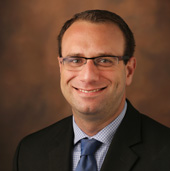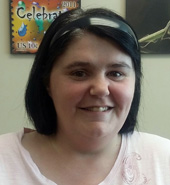Patients with epilepsy who suffer seizures that can’t be effectively treated with medications or established surgical interventions could benefit from responsive neurostimulation, a relatively new treatment.
“This is definitely a treatment that could help that people don’t know about,” said Dario Englot, M.D, Ph.D., assistant professor of Neurological Surgery.

The treatment, which was approved by the U.S. Food and Drug Administration in 2013, involves surgically implanting a neurostimulator under the scalp with leads that go into the brain to the source of the seizures.
The device, NeuroPace’s RNS System, monitors brainwaves for unusual activity associated with seizures, then sends out corrective pulses to prevent their onset.
“When the responsive neurostimulation detects a brain rhythm that is highly likely to be seizure activity, only then does it apply the stimulation to stop the seizure activity,” said Englot.
“One of the latest studies on the device that came out in recent months that tracked outcomes over a six-year period suggested a 70 percent decrease in seizures in patients who have had this treatment.”
Neurosurgeons at Vanderbilt University Medical Center (VUMC) have performed 15 of the implant surgeries over a three-year period.
Kimberly Matherly of Morristown, Tennessee, received an implant at VUMC. She said she’s progressed from suffering five to six seizures a month to just one every three or four months since 2014, which is when she underwent the surgery.

“Everything has worked out wonderfully for me,” Matherly said.
The 31-year-old woman is learning to drive and was just accepted back into college for the spring 2018 semester.
“It’s helped me because now I don’t have to live with the fear of something causing me too much stress and then causing me to go into a seizure,” Matherly said. “That’s my biggest trigger. For a lot of people it is flashing lights or blinking lights. For me, it was stress.”
Surgery, in general, is an under-utilized treatment for epileptic seizures that can’t be controlled with medications, said Englot.
“Thirty percent of patients with epilepsy are drug resistant, meaning they have persistent debilitating seizures despite having failed multiple anti-epileptic medications,” he said. “Yet, less than 1 percent of those patients are ever referred to a Level 4 center where they can be fully evaluated for surgical treatment or other medical treatments. It’s actually less than 1 percent. So this is an extremely underserved patient population.”
VUMC is the only Level 4 center for adults in Tennessee designated as such by the National Association of Epilepsy Centers. The Medical Center has a team of medical experts dedicated to epilepsy treatment, including neurologists, neurosurgeons, neuroradiologists and neuropsychologists.
“Epilepsy surgery, in general, is an under-appreciated entity in medicine,” Englot said. “Even primary care providers and neurologists who treat epilepsy are unaware of all the different surgical options that are available at a center like Vanderbilt.”
In August, Englot was appointed to chair a task force of epilepsy experts from across the globe that will be drafting surgery recommendations for the International League Against Epilepsy to consider.
“This will be an opportunity for an international body to evaluate the evidence and provide consensus statements about epilepsy surgery,” Englot said.
The most common surgical intervention is resection, or surgical removal, of brain tissue that is the source of seizures, which can be done if the tissue is not in an eloquent area of the brain that controls speech, movement or other vital functions.
When resections cannot be performed in these areas of the brain, neurostimulation may be appropriate. Responsive neurostimulation is also appropriate when seizures originate from two parts of the brain.
“This is a category of patients that we have never had adequate treatments for in the past,” Englot said.












